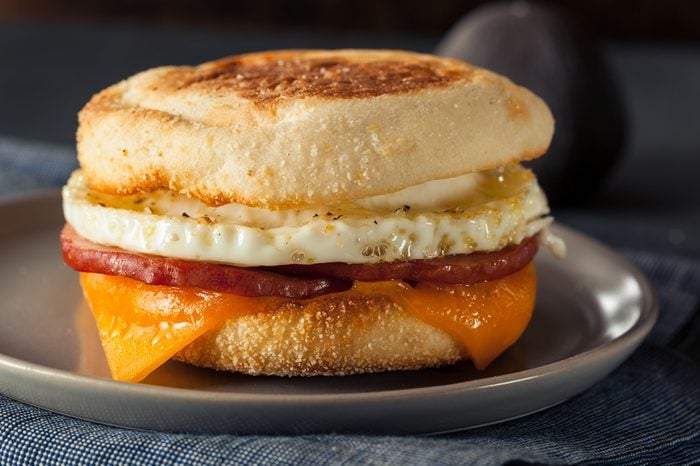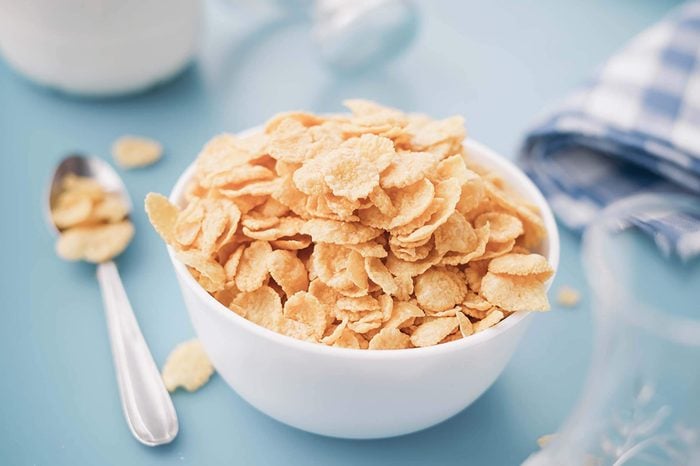
Low- or no-fiber cereals
Cereal that is high in carbohydrates and sugar and low in fiber could cause your blood sugar to spike, then quickly drop—which can lead to mid-morning cravings and moodiness. Nutritionist Mitzi Dulan, RD, the Kansas City, KS-based author of The Pinterest Diet: How to Pin Your Way Thin, recommends choosing a cereal with at least 3 grams of fiber per serving. Boost the fiber further by adding berries, a sprinkle of wheat germ or flaxseed, or sliced almonds.
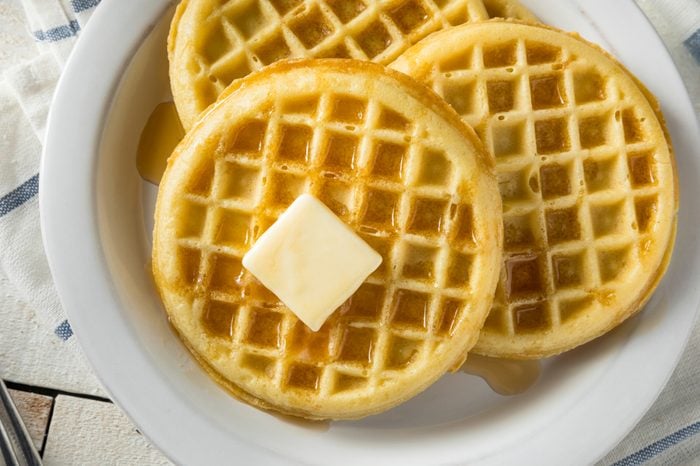
Frozen waffles, pancakes, or french toast
Most packets of frozen waffles, pancakes, and french toast sticks contain simple carbs, which don’t help keep you full or focused. Also, it’s rare that they contain whole grains or fiber. Always make sure to actually read the nutrition label to make sure. Look for healthier alternatives made with flaxseed and 100 percent whole grains.
The Absolute Best Breakfast to Flatten Your Stomach, According to an Expert
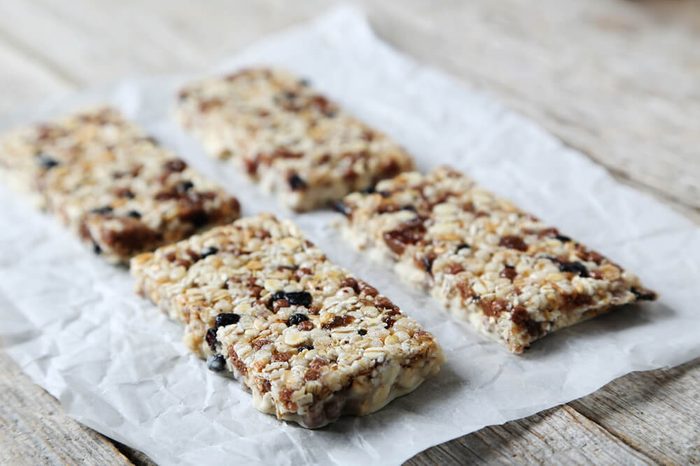
Breakfast bars
“Many bars are loaded with sugar and have little to no protein and fiber,” says nutritionist Rania Batayneh, MPH, author of The One One One Diet. She recommends looking for those that combine protein, fiber, and healthy fats such as KIND bars, many of which have fewer than 5 grams of sugar and at least 5 grams of protein.
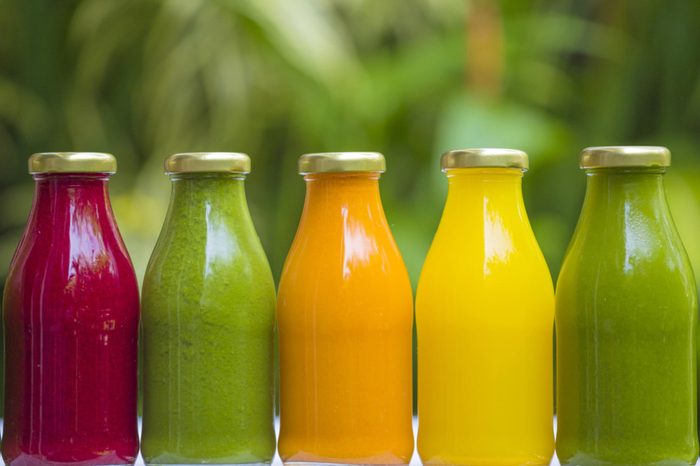
Store-bought smoothies
A lot of store-bought smoothies contain very little real fruits and vegetables. Many contain a lot of sugar and even high fructose corn syrup. Drinking these every morning may not be your best choice. Instead, make yourself a smoothie at home so you know the exact ingredients you’re putting into it. Add in flaxseed and spinach or kale for more nutritional value.
14 High-Protein Breakfast Ideas That Will Help You Lose Weight
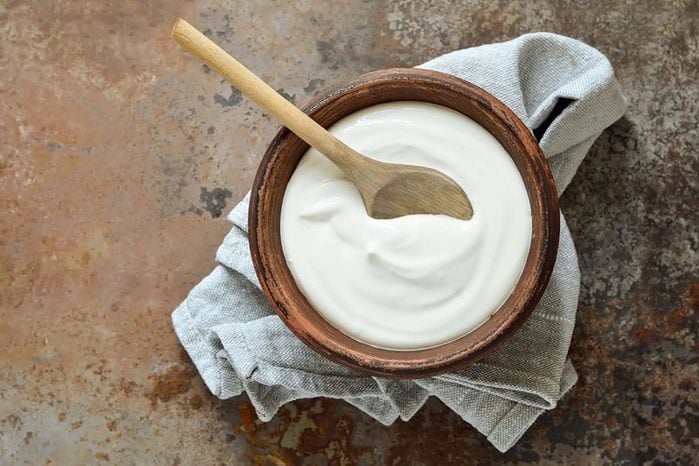
A cup of non-fat yogurt
It’s not a knock against dairy; this is a case of a too-small morning meal. “I see many people who eat too little for breakfast” and then are ravenous by mid-morning, says Batayneh. Depending on your weight and activity levels, she recommends a calorie range of 250 to 400. So in addition to your yogurt, add a small bowl of oatmeal with fresh fruit, for example, to make a more complete and energy-boosting meal.
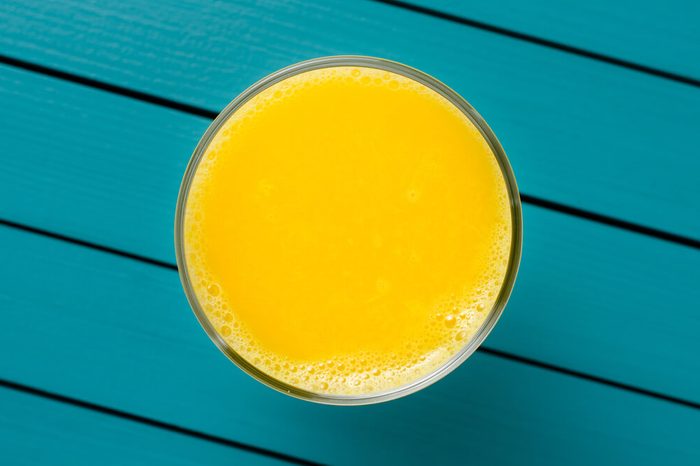
A glass of juice
Dulan is surprised by how many non-breakfast eaters grab a glass of juice and call it a meal. “It’s all carbs, all sugar, and you’re not balancing it out with other nutrients,” she explains. Same goes for healthy-looking, cold-pressed green juices, too; just because it contains kale doesn’t make it a solid breakfast. “These often don’t have enough protein, which will accelerate your hunger by mid-morning,” says Janet Helm, RD, a Chicago-based registered dietitian at Nutrition Unplugged. She suggests taking in something with fiber, protein, and fat like an apple with peanut butter.

Coffee deluxe
Another popular choice among people who aren’t hungry for a morning meal is coffee. But some coffee add-ons can be carb or sugar bombs, says Dulan. “Many people like their coffee with added syrups, sugar, and other ingredients that can add calories without adding much-needed protein or fiber.” The caffeine boost may give you an immediate energizing jolt, but it won’t provide all-morning nourishment.
I Had Mushroom Coffee Every Day for a Week—Here’s What Happened
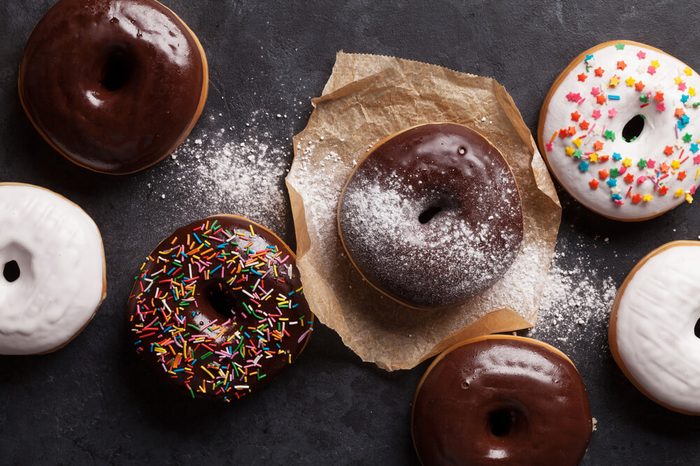
Doughnut
With sugar, refined carbs, and deep-fried fat, doughnuts are another breakfast food to avoid when you can. “These can be an occasional treat on a weekend, but should not be the foundation of your weekday breakfast,” says Helm. If you’re going to indulge, at least pair the doughnut with protein or fat, suggests Batayneh, to help stabilize your blood sugar and avoid an energy crash. Try a handful of nuts, glass of milk or a hardboiled egg.
If You Eat This One Breakfast, You’ll Keep Burning Calories All Day Long
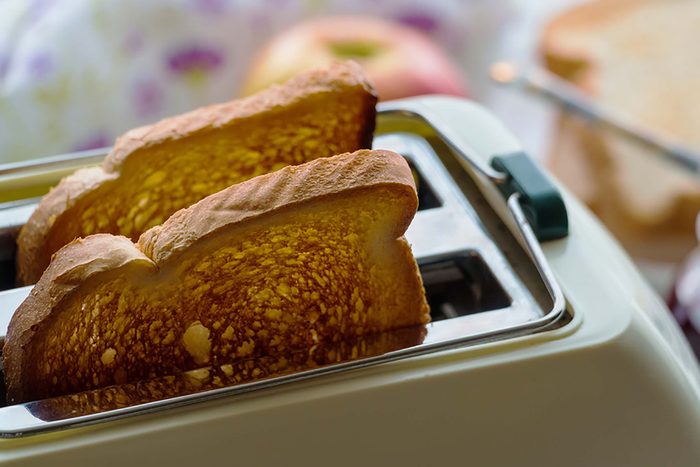
Toast with butter
Popping a piece of bread in the toaster and spreading some butter on it can be a quick, easy breakfast. However, you’ll probably be hungry again in 45 minutes. A simple piece of toast doesn’t contain any protein. It’s better to eat it as a side with a more substantial breakfast, such as a vegetable omelet or spread it with protein-rich nut butter. You can use 100% whole grain bread to be even healthier.
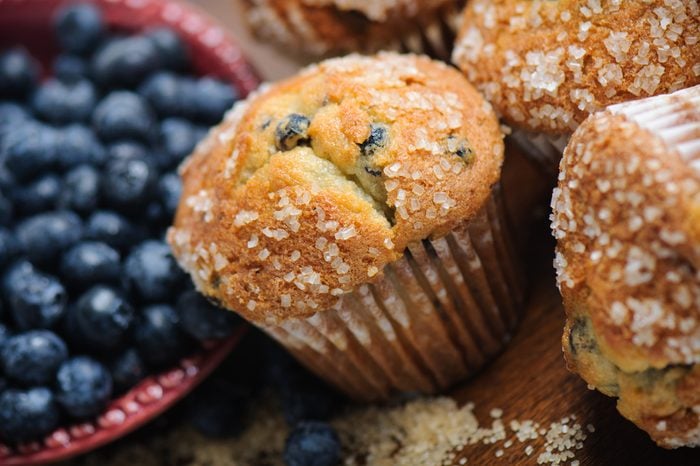
Muffins
“Muffins can look so virtuous, especially if they have ‘bran’ in the name or if they look dark,” says Helm. “But many are just cake in disguise, without much whole grain or fiber.” Plus big bakery muffins often have more calories than you realize—as many as 600 to 800. If you must have a store-bought muffin try to eat only half, and combine it with protein, like Greek yogurt. You can also make a healthy batch yourself; keep in the freezer and defrost one on hectic mornings.
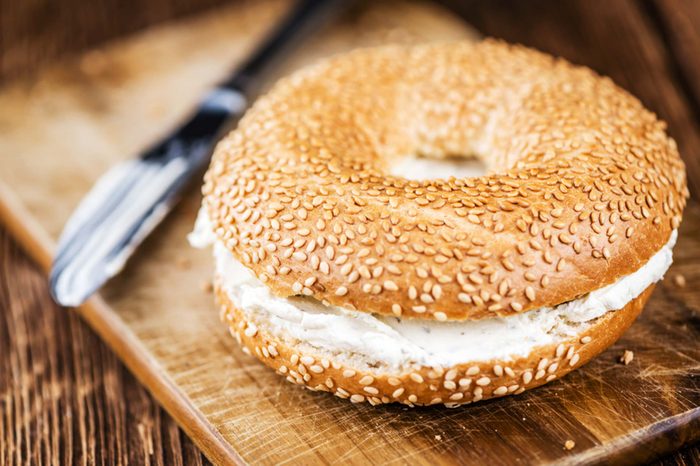
A bagel with butter or cream cheese
Many bagels are the equivalent of four or more slices of white bread, says Dulan. “And where’s the protein?” she asks. Make this meal healthier by choosing a whole-wheat version, eating half, and spreading on a topping packed with protein and healthy fat, like mashed avocado or peanut butter.
Here’s What Skipping Breakfast Does to Your Heart, Says New Study
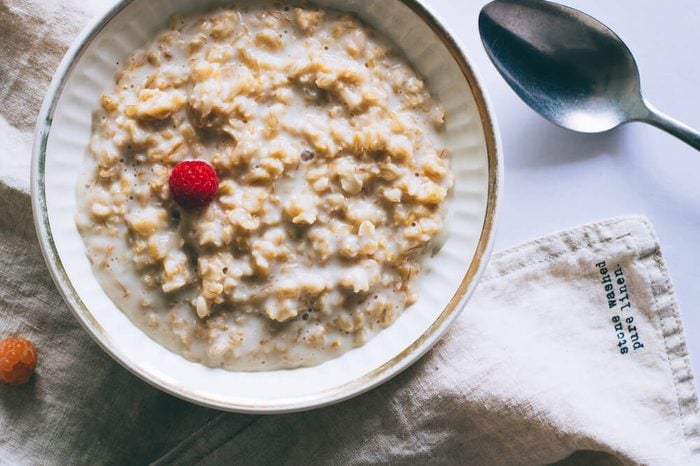
Pre-mixed oatmeal
Many pre-mixed flavored oatmeal packets have similar ingredients to unhealthy cereal. Each packet contains a lot of sugar and is typically made with instant oats, which are processed and lower in fiber. If you have time, make your own oatmeal using rolled or steel oats. Then, your breakfast will be higher in fiber and you can control the amount of sugar.
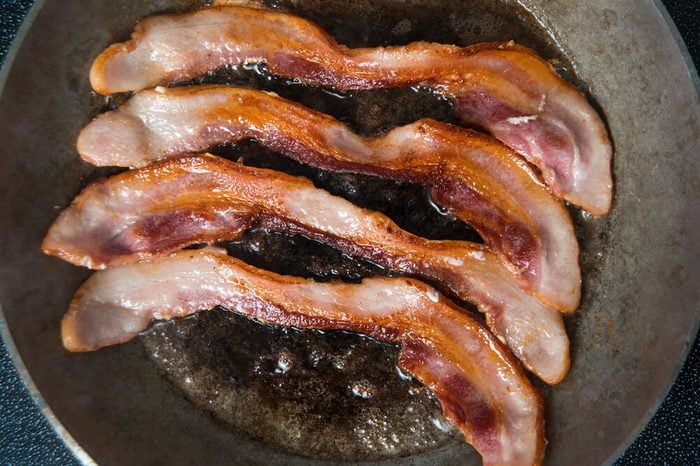
Bacon and sausage
Here’s a statistic that’s hard to digest: every additional 1.8 ounces of processed meat you eat daily could raise your risk for heart disease and type 2 diabetes over time, according to Harvard researchers. Batayneh suggests you “save these breakfast meats for special occasions, like a family brunch.” If you do indulge, make sure the rest of your breakfast includes healthy ingredients.
Store bought breakfast sandwiches
A lot of people pick up a breakfast sandwich in the morning because they’re filling and easy to eat on the go. But, you’re not doing yourself any favors. The frozen, deli-bought or fast food sandwiches are filled with sodium, preservatives, and unhealthy fats. A better alternative: make your own breakfast sandwich using whole wheat toast or a whole wheat wrap topped with a vegetable scramble.
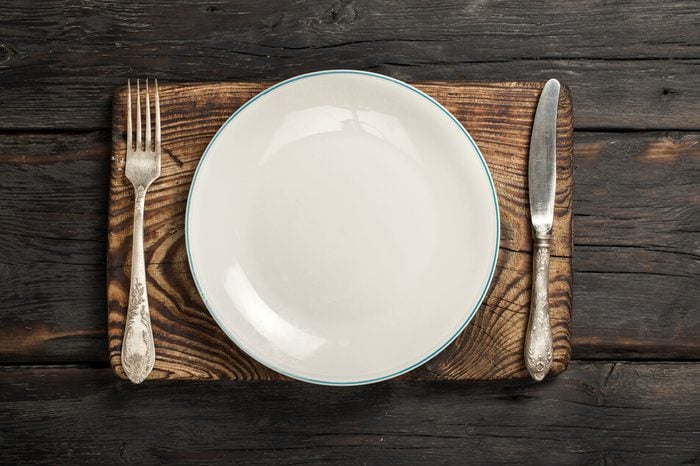
No breakfast
“Eating almost anything for breakfast is better than skipping it,” says Helm, explaining that many people who try to bank morning calories to enjoy later often then overeat. If you miss out on healthy nutrients such as milk, whole grains, and fruit in the morning, it can be challenging to consume enough of these essentials as the day goes on. If you’re one of the people who says you simply don’t feel hungry enough to eat when you wake, Batayneh encourages you to look at your overall eating habits. Eating too much at dinner or snacking heavily before bed may be one problem.
